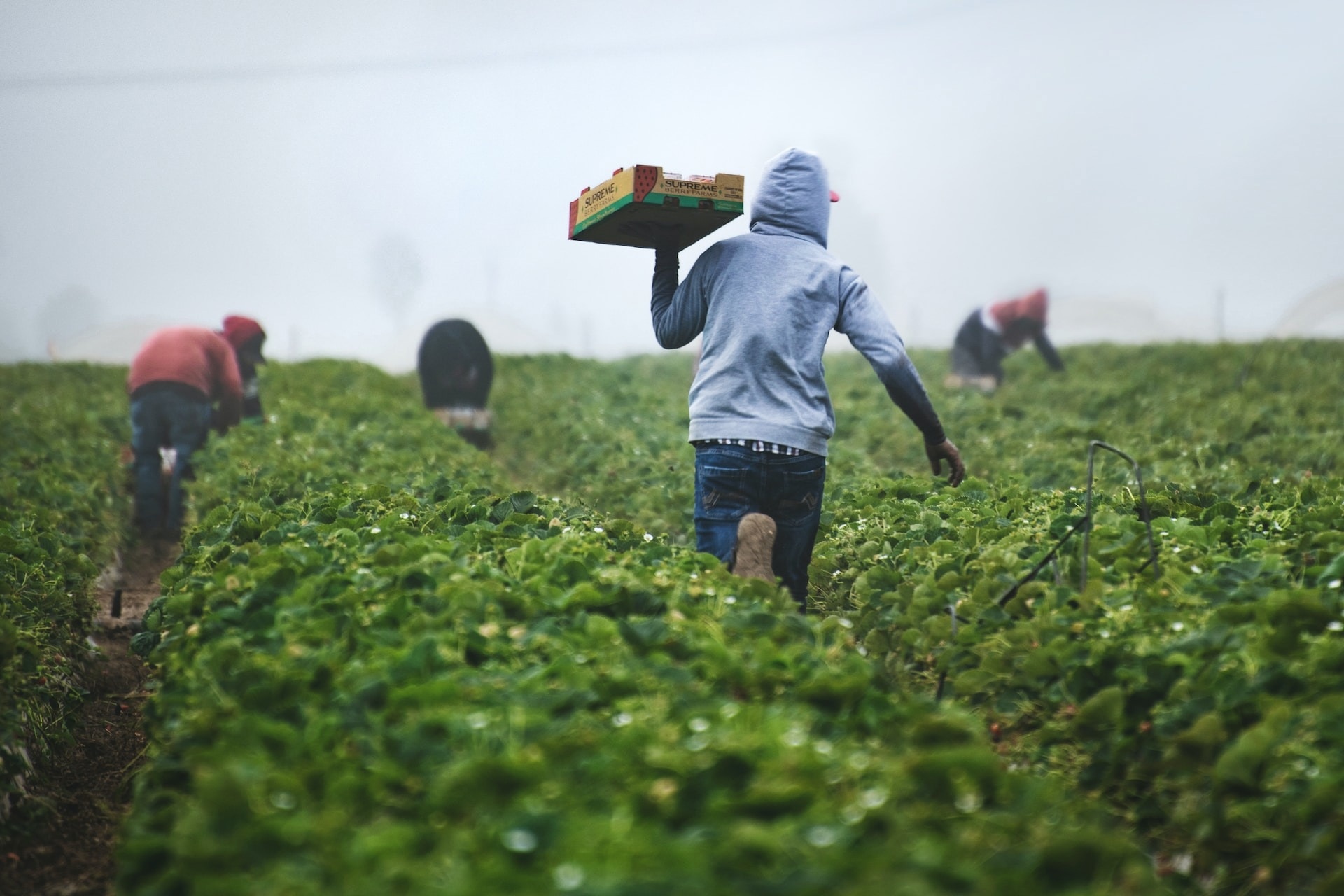
Image Credit: Tim Mossholder via Unsplash
Analyzing the collected data will enable the project’s team to identify tasks that, when excessively repeated, impact the worker’s health and discern which land parcels exhibit higher productivity. Following the completion of the project, the researchers applied for a patent.
Most agricultural activities continue to demand physical exertion. The International Labor Organization highlights “unnatural body positions, prolonged static postures, and repetitive tasks” as common hazards in agriculture. It is also worth noting that fatigue and challenging terrain can heighten the risk of accidents.
While the agricultural industry is increasingly embracing technology and investing in digitalization, certain tasks still necessitate manual execution.
But what if technology could assist farmers in avoiding physically hard tasks? What if farmers could analyze their crops using data acquired during routine tasks? The Institute for Systems and Computer Engineering, Technology and Science (INESC TEC) has devised a solution capable of obtaining metrics that enable the assessment of workers’ health and well-being by monitoring their tasks and work intensity. These metrics are then harnessed to provide geolocated insights into crop conditions.
The AgWearCare project prioritized “well-being” and “productivity” as the two fundamental aspects in the development of a monitoring system for farmers, catering to their occupational health and crop and human resource management needs. This was accomplished by gathering data from INESC TEC’s proprietary sensors. The experiments were conducted with laborers engaged in three distinct types of crops: vineyards, olive trees, and kiwifruit.
Farmers ventured into the fields donning wearables, which collected data that was subsequently analyzed and used to inform decision-making processes. The data processing has now been seamlessly integrated into the system, allowing for the real-time calculation of essential metrics.
By measuring the workers' geolocated metrics, we can understand which areas of the field require greater or lesser efforts from the worker - which, in itself, may also indicate a greater or lesser density of any given crop.
Duarte Dias, Researcher, The Institute for Systems and Computer Engineering, Technology and Science
This innovative concept, along with the data it accumulates, enabled researchers to file a patent for assessing crop conditions through the analysis of farmers’ activities. But can this analysis yield instant in situ implications? Yes, but it also has a significant impact on the workers’ day-to-day responsibilities.
Dias added, “One of the most practical examples is the number of movements that a person performs during certain activities, e.g., pruning or picking the fruit; these indicate the worker's effort and the amount of pruning and picking required for a certain area.”
Through this monitoring, strategies can be developed to mitigate the risk of muscle-related problems and potential injuries. Additionally, valuable information about crop conditions can be gathered without the need for specialized technology like ground robots or drones.
AgWearCare also offers support to agricultural managers, enabling them to gain deeper insights into the individual tasks performed by their employees.
The project was spearheaded by Wise Connect SA in collaboration with the Instituto Superior de Agronomia and APPITAD-the Association of Producers in Integrated Protection of Trás-os-Montes and Alto Douro.
Dias noted, “The leading company of the project (Wise Connect S.A.) was quite interested in this project, and it aims to promote the development of the system-as an add-on for their commercial platform called WiseCrop.”
Additional plans involve conducting pilot tests in collaboration with INESC TEC to enhance the technology’s field validation.